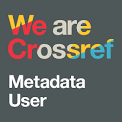Using Sequences Pictures to Increase Middle-School Students' Ability in Narrative Text
DOI:
https://doi.org/10.51574/ijrer.v4i1.369Keywords:
Media; Narrative Text; Middle-School Students; Sequence Picture; Writing Ability.Abstract
The objectives of the research are to describe the improvement of students’ ability in writing narrative text through sequence pictures as a learning media. This research focuses on two problem statements: how does the use of sequence pictures as a learning medium enhance students' ability to write narrative texts? What is the reaction of the third-year students at Public Middle School 1 Sampaga to the use of sequence pictures as a learning medium? The study also seeks to understand the students' reactions to the use of sequence pictures as a learning tool. The researcher conducted a classroom action research study that consists of two cycles. The research findings revealed that the students' proficiency in narrative writing remained low. The students’ class mean score in the pre-cycle is 43.24. After giving sequence pictures as a learning media in the first cycle, the class mean score improved to 59.68. Then, in the second cycle, the class mean score improved to 76.96. It could be concluded that the third-year students at Public Middle School 1 Sampaga, especially in class IX D, have a skill to make excellent content, organization, and vocabulary using writing narrative text after applying sequence pictures as a teaching media.
References
Apsari, Y. (2017). The use of picture series in teaching writing recount text. Eltin Journal: Journal of English Language Teaching in Indonesia, 5(2), 51-56.
Bean, J. C., & Melzer, D. (2021). Engaging ideas: The professor's guide to integrating writing, critical thinking, and active learning in the classroom. John Wiley & Sons.
Danker, J., Strnadová, I., & Cumming, T. M. (2019). Picture my well-being: Listening to the voices of students with autism spectrum disorder. Research in Developmental Disabilities, 89, 130-140.
Derakhshan, A., & Karimian Shirejini, R. (2020). An investigation of the Iranian EFL learners’ perceptions towards the most common writing problems. Sage Open, 10(2), 2158244020919523.
Farooq, M. S., Uzair-Ul-Hassan, M., & Wahid, S. (2020). Opinion of second language learners about writing difficulties in English language. South Asian Studies, 27(1).
Fu, Q. K., Lin, C. J., Hwang, G. J., & Zhang, L. (2019). Impacts of a mind mapping-based contextual gaming approach on EFL students’ writing performance, learning perceptions and generative uses in an English course. Computers & Education, 137, 59-77.
Grenner, E., Åkerlund, V., Asker-Árnason, L., van de Weijer, J., Johansson, V., & Sahlén, B. (2020). Improving narrative writing skills through observational learning: a study of Swedish 5th-grade students. Educational Review, 72(6), 691-710.
Herrlinger, S., Höffler, T. N., Opfermann, M., & Leutner, D. (2017). When do pictures help learning from expository text? Multimedia and modality effects in primary schools. Research in Science Education, 47, 685-704.
Liando, N. V. F., Tatipang, D. P., Tamboto, G., Poluan, M., & Manuas, M. (2022). Pictures as a learning media in teaching vocabulary. Jurnal Ilmiah Universitas Batanghari Jambi, 22(3), 1944-1949.
Lim, H., & Childs, M. (2020). Visual storytelling on Instagram: branded photo narrative and the role of telepresence. Journal of Research in Interactive Marketing, 14(1), 33-50.
Namaziandost, E., Esfahani, F. R., Nasri, M., & Mirshekaran, R. (2018). The effect of gallery walk technique on pre-intermediate EFL learners’ speaking skill. Language Teaching Research Quarterly, 8, 1-15.
Nassaji, H., & Fotos, S. S. (2011). Teaching grammar in second language classrooms: Integrating form-focused instruction in communicative context. Routledge.
Nuraini, A., Nurani, A., & Pratama, V. (2023). An Analysis of Student Difficulties In Writing Narrative Text: A Case Study At Tenth Grade Students Of SMAN 7 Kota Serang. Jurnal Kajian Ilmu Pendidikan (JKIP), 4(1), 20-27.
Pateşan, M., Balagiu, A., & Alibec, C. (2018). Visual aids in language education. In International conference Knowledge-based Organization (Vol. 24, No. 2, pp. 356-361).
Podobnik, U. (2017). Stimulating prewriting skills with the help of pictorial images. Teaching Artist Journal, 15(2), 51-63.
Punar Özçelik, N., & Yangın Ekşi, G. (2024). Cultivating writing skills: the role of ChatGPT as a learning assistant—a case study. Smart Learning Environments, 11(1), 10.
Rahiem, M. D. (2021). Storytelling in early childhood education: Time to go digital. International Journal of Child Care and Education Policy, 15(1), 4.
Ramdani, A., Jufri, A. W., Gunawan, G., Fahrurrozi, M., & Yustiqvar, M. (2021). Analysis of students' critical thinking skills in terms of gender using science teaching materials based on the 5E learning cycle integrated with local wisdom. Jurnal Pendidikan IPA Indonesia, 10(2), 187-199.
Tao, Y., & Yu, J. (2024). Cultural threads in writing mastery: A structural analysis of perfectionism, learning self-efficacy, and motivation as mediated by self-reflection in Chinese EFL learners. BMC psychology, 12(1), 80.
Wulandari, D., Handayani, C., & Amanda, S. (2023). The Use of Sequence Picture to Improve the Students’ Speaking Skill at SMK Negeri 1 Sei Kepayang. Riwayat: Educational Journal of History and Humanities, 6(1), 152-161.
Yilmaz, R. M., & Goktas, Y. (2017). Using augmented reality technology in storytelling activities: examining elementary students’ narrative skill and creativity. Virtual reality, 21, 75-89.
Yusuf, Q., Yusuf, Y. Q., Erdiana, N., & Pratama, A. R. (2018). Engaging with Edmodo to teach English writing of narrative texts to EFL students. Problems of Education in the 21st Century, 76(3), 333.
Zull, J. E. (2023). The brain, learning, and study abroad. In Student learning abroad (pp. 162-187). Routledge.

Downloads
Published
How to Cite
Issue
Section
License
Copyright (c) 2024 ETDC: Indonesian Journal of Research and Educational Review

This work is licensed under a Creative Commons Attribution-ShareAlike 4.0 International License.









1.png)













